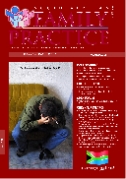Management and Profile of Rape Victims attending the Karl Bremer Rape Centre,
Keywords:
Rape victims, management, profile, sexual assault, HIV infection
Abstract
Background: Given the high prevalence of HIV infection in this country today it is not difficult to observe the risk faced by victims of sexual assault. In addition there is also a lack of available data on the per-episode risk of HIV infection with specific sexual encounters, and in combination with poor follow–up practices by sexual assault victims, have resulted in few studies assessing the risk of HIV infection after sexual assault. There is a paucity of research conducted in this field particularly at rape centres in the Cape Metropolitan area of the Western Cape. Aim: To obtain a profile of sexual assault victims and the management received at the Karl Bremer Hospital Rape Centre over a period of one year. Study design: Descriptive cross-sectional survey. Setting: The study was conducted at the Rape Centre at Karl Bremer hospital, Cape Town, South Africa. Methods: To describe the frequency of Sexually Transmitted Infections (STIs) in rape victims, all consecutive patients who presented to the rape centre over the one year period from 1st of April 2006 to 31 March2007 were included in the sample. A total of 820 patient records were evaluated. The researcher and research assistant examined the victims’ folders at the centre for information covered in the objectives. A checklist was used as an instrument to obtain relevant information about pregnancy; STIs, pre and post test counseling, HIV status, tolerance to ART post sexual assault and other information covered in the objectives. Informed consent was obtained from all participants. Results: The age of the victims ranged from 6 to 70 years (average age 23.3). Most of the victims (76.5%) were aged 10 – 29, 14.3% were 30 – 39, 2.1% were 50 or older, and 0.2% was less than 10 years. About 5.5% had completed primary school, 26.8% had completed secondary school, and only 1.8% had tertiary education. Most of the victims were not married (91.8%) and had experienced their first episode of assault (88.4%). In addition about 24.6% presented with sexually transmitted infection and 12.1% were HIV positive at presentation. About two thirds (67.2%) of the victims were offered post coital contraception. It is however disturbing to note that only 6.2% had pre-test counseling and only 6,1% of the sexual assault victims had post test counseling. About two thirds (66.83%) of the victims were offered antiretroviral therapy. Out of 548 patients who received antiretroviral therapy (ARV), 64.2% were placed on Combivir and only 1.5% took Zidovudine. There seems to be a positive association between sexual transmitted infection and HIV infection at presentation (OR 2.96; 95% CI 1.96 – 4.56). There was no statistically significant difference between level of education, employment status, or marital status and HIV status at presentation. In addition, there was no statistically significant difference between number of episodes of sexual assault and HIV status. Conclusions: The prevalence of STI in victims of sexual assault attending the Karl Bremer rape centre during the period April 2006 to March 2007 is about 24.6% and that of documented HIV infection, 12.1%. The results also seem to confirm a positive association between STI and HIV infection in this study population. Pretest and post test counseling occurred very infrequently and this needs to be addressed. Further attentions needs to be focused on proper training of professional staff members with regards to counseling skills to further enhance the quality of care of sexual assault victims at Karl Bremer Hospital Rape Centre.
Published
2008-09-02
Section
Original Research
By submitting manuscripts to SAFP, authors of original articles are assigning copyright to the South African Academy of Family Physicians. Copyright of review articles are assigned to the Publisher, Medpharm Publications (Pty) Ltd, unless otherwise specified. Authors may use their own work after publication without written permission, provided they acknowledge the original source. Individuals and academic institutions may freely copy and distribute articles published in SAFP for educational and research purposes without obtaining permission.

